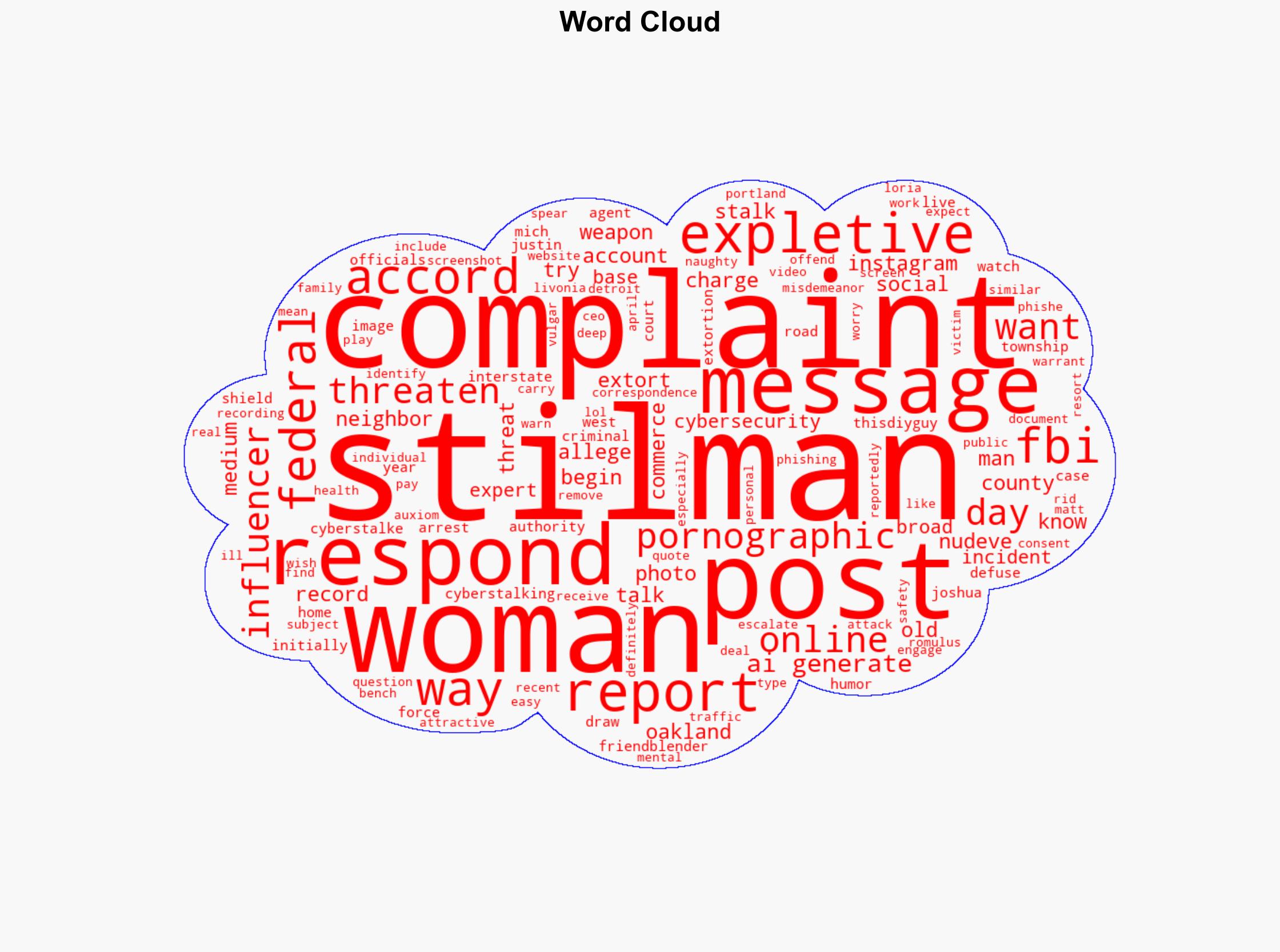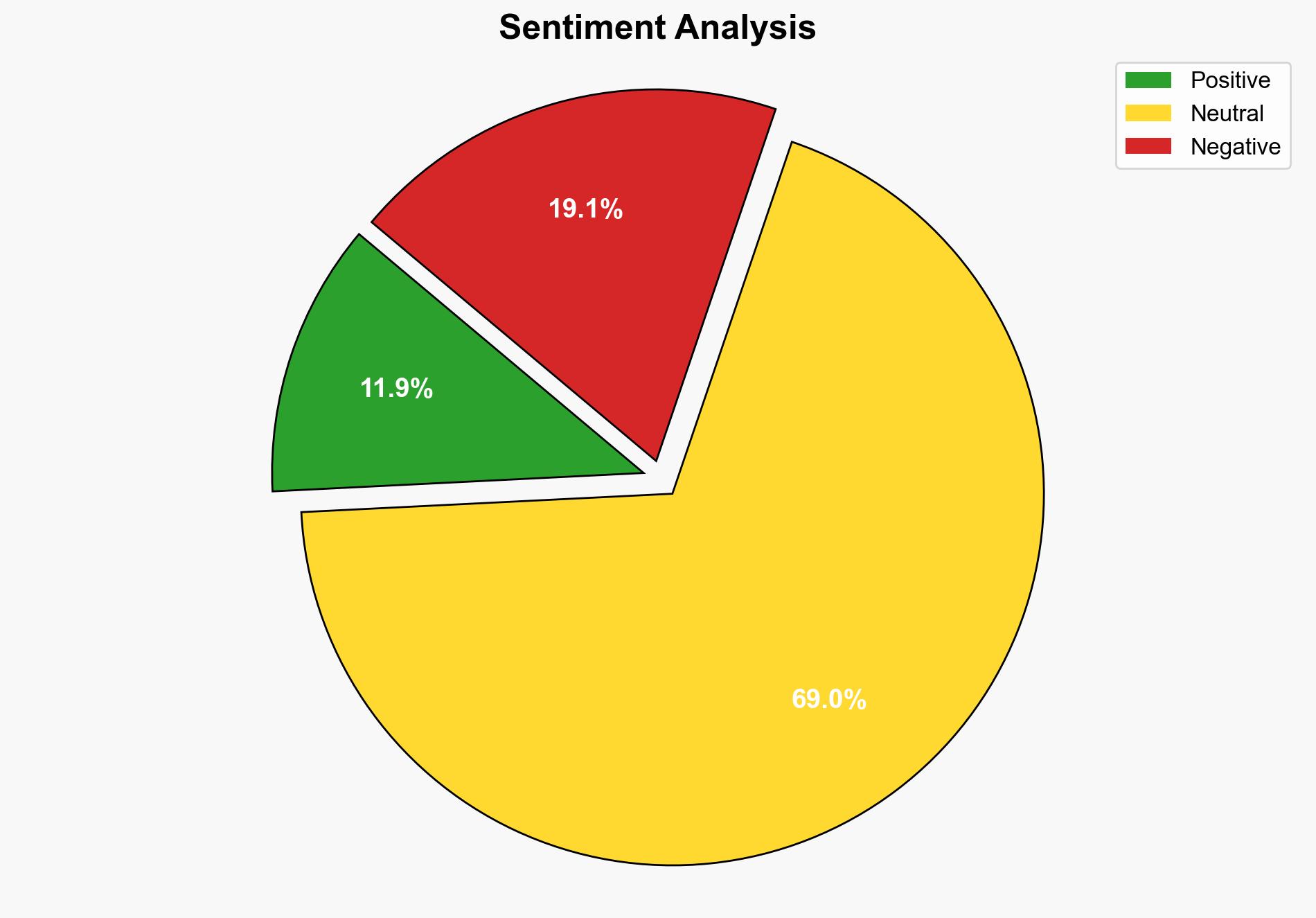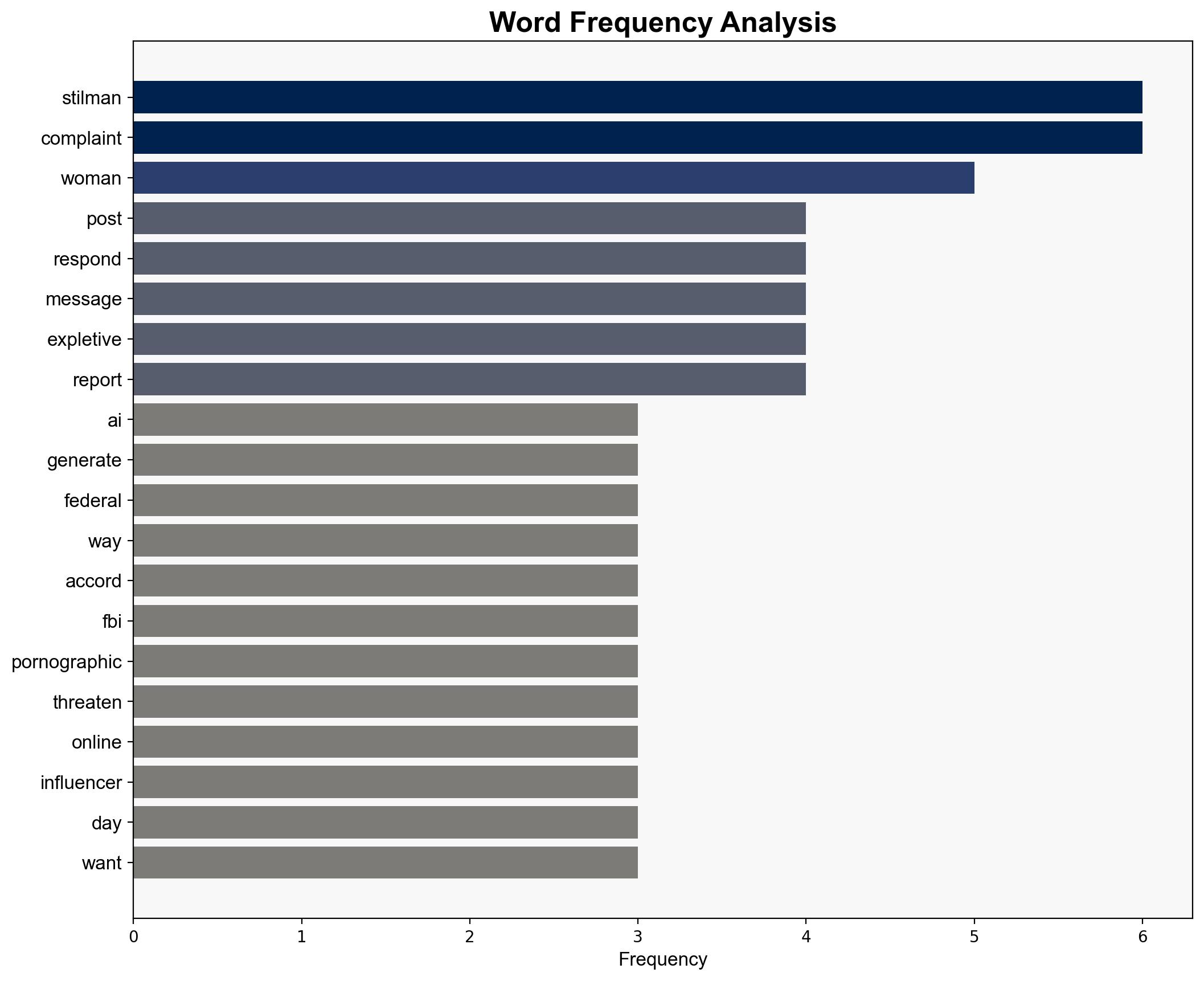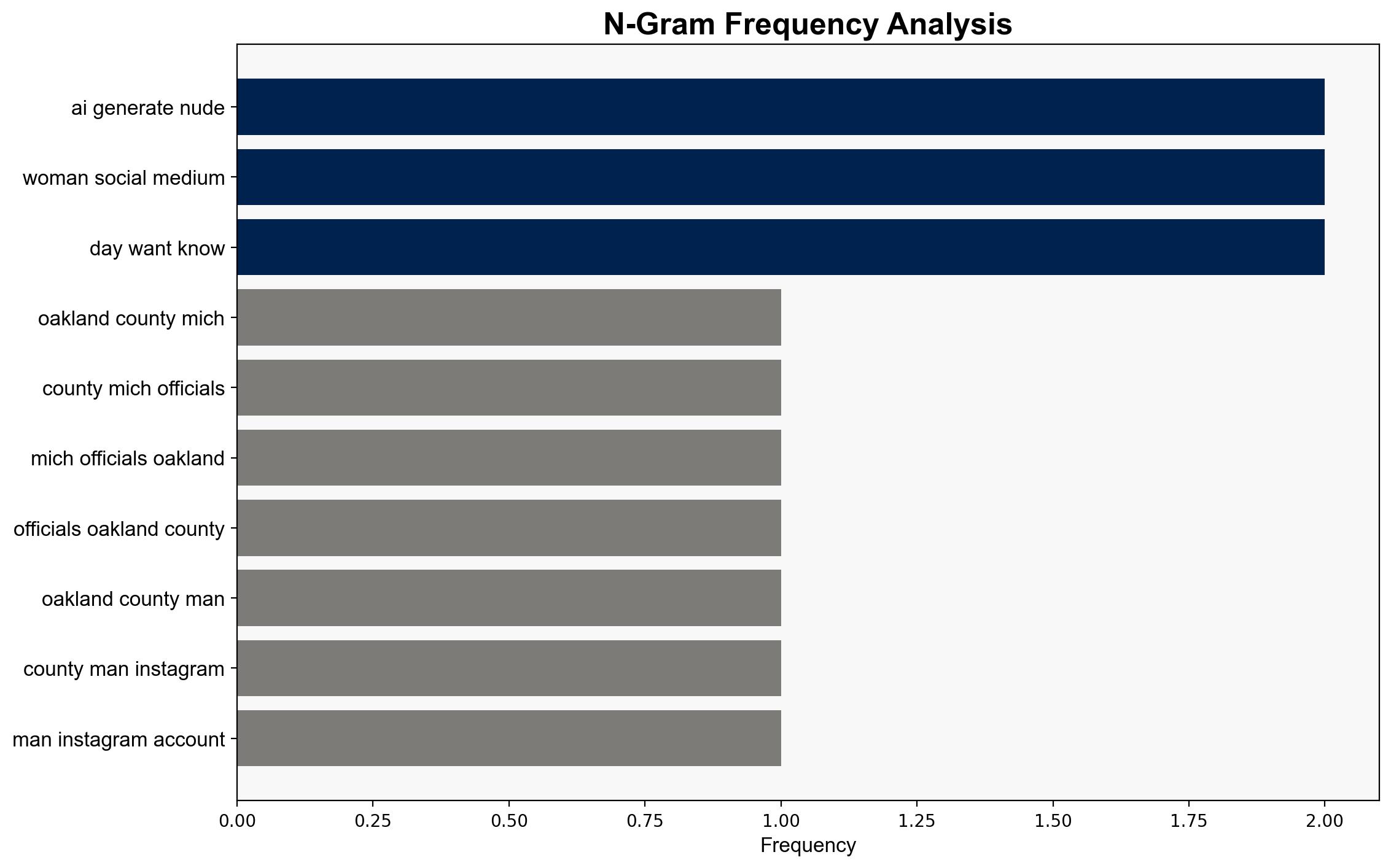How FBI says Oakland County man used Instagram accounts AI nude photos to stalk women – WDIV ClickOnDetroit
Published on: 2025-09-27
Intelligence Report: How FBI says Oakland County man used Instagram accounts AI nude photos to stalk women – WDIV ClickOnDetroit
1. BLUF (Bottom Line Up Front)
The most supported hypothesis is that Joshua Justin Stilman used AI-generated nude images to cyberstalk and extort women, leveraging social media platforms for these activities. This assessment is made with a high confidence level based on the detailed allegations and evidence presented in the criminal complaint. Recommended action includes enhancing cybersecurity measures and public awareness campaigns to prevent similar incidents.
2. Competing Hypotheses
1. **Hypothesis A**: Joshua Justin Stilman actively used AI-generated nude images to cyberstalk and extort women, as alleged by federal authorities. This hypothesis is supported by the FBI’s detailed criminal complaint and the specific threats and actions described.
2. **Hypothesis B**: Stilman’s actions were exaggerated or misinterpreted, and he did not intend to extort or cause harm. This hypothesis could be supported if there were evidence of misunderstandings or miscommunications between Stilman and the alleged victims.
Using Analysis of Competing Hypotheses (ACH), Hypothesis A is better supported due to the specificity of the allegations, the involvement of federal authorities, and the consistency of the victim’s reports.
3. Key Assumptions and Red Flags
– **Assumptions**: It is assumed that the criminal complaint accurately reflects Stilman’s actions and intentions. Another assumption is that AI-generated images were indeed used as described.
– **Red Flags**: The potential for cognitive bias in interpreting Stilman’s intentions and the possibility of missing contextual information about his mental health or personal circumstances.
– **Blind Spots**: Lack of direct evidence from Stilman’s perspective or any defense statements that could provide alternative explanations.
4. Implications and Strategic Risks
– **Cybersecurity Risks**: This case highlights vulnerabilities in social media platforms that can be exploited using AI technology.
– **Psychological Impact**: Victims may experience long-term psychological effects, influencing public trust in digital platforms.
– **Escalation Scenarios**: If not addressed, similar tactics could be adopted by others, leading to widespread cyber harassment and extortion.
5. Recommendations and Outlook
- Enhance social media monitoring tools to detect and prevent AI-generated content misuse.
- Conduct public awareness campaigns about the risks of AI-generated images and cyberstalking.
- Scenario Projections:
- **Best Case**: Successful legal action deters similar crimes, and improved cybersecurity measures are implemented.
- **Worst Case**: Increase in AI-based cybercrimes due to inadequate preventive measures.
- **Most Likely**: Gradual improvement in detection and prevention, with ongoing legal and technological challenges.
6. Key Individuals and Entities
– Joshua Justin Stilman
– FBI Detroit and Portland offices
– Matt Loria, CEO of Axiom Cybersecurity
7. Thematic Tags
national security threats, cybersecurity, counter-terrorism, regional focus





